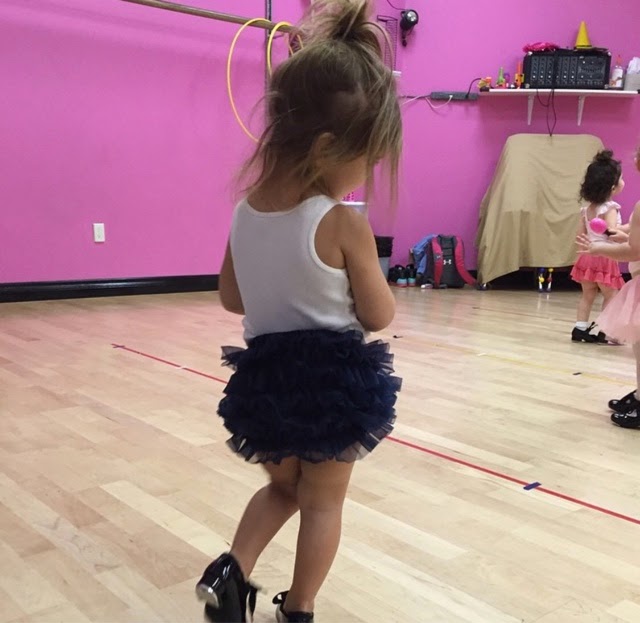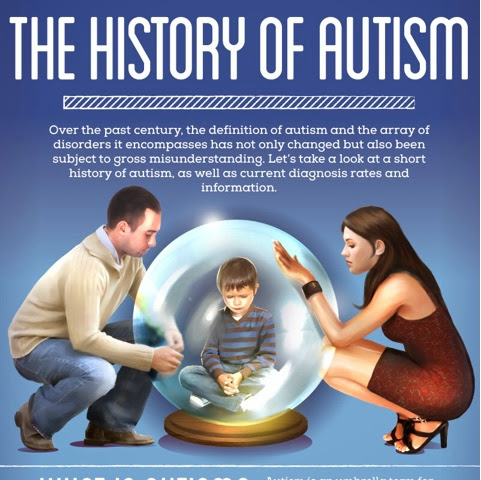mel b
Hilaria Baldwin shows you how to have a stretch mark free pregnancy
Still…we’ve been down this road before—> SEE HERE!
Anyway, do you have any opinions on any of this?

Study Skills Reboot: Time Management, Organization & Note-taking skills for Middle and High School Students

The transition from elementary school to middle and high school for many children can be challenging, especially for boys. My 12-year old son has been having difficulty managing his time, classes, deadlines and as a result, his grades have suffered for almost two years now. It took me awhile but I think I finally figured out part of the root causes of his struggles: he doesn’t have organizational study skills.
He isn’t alone, I am sure.Children go from having one teacher who guides them for all of their subjects to having to deal with multiple teachers and classes, numerous binders, folders, notebooks, papers and assignment books. From one year to the next, they have syllabuses from different classes all with various project, quiz, exams and other deadlines. Class lectures also are different. They require focus to retain the information being taught where before the class is broken up by activities, gym class, outdoor play and lunch. It made learning less stressful. In middle school, teachers expect more active class participation. It’s not enough to coast quietly.
Many school children in this stage need a method to help them keep track of their work and to prioritize their assignments and due dates.
So…I searched the internet for resources, tips and advice and came up with a system I plan to implement and hope will work. I am sharing it here for any other parent who may be dealing with a transitioning child who is also having a tough time meeting their school obligations.<
ONE BINDER METHOD

First, I am throwing out the multiple notebook method that the school requires and going to go with a one binder method. I am going to purchase one mega three ring binder and purchase 5 thin one-subject spiral notebooks to go in it. I will have matching color-coordinator two-pocked three-hole punched folders to accompany each subject that will be placed behind each notebook. In the left pocket of each folder, he will insert his class syllabus for the year or semester or term. The right pocket will be used to hold loose-leaf assignment sheets and info sheets distributed during class. The notebook will be used for note taking on one side of the pages only and dated at the upper right hand corner so he can keep track.The front first page will be a wipe-able laminated monthly calendar that can be reused each month where he will input all quizzes, exams and project deadlines for all classes in one space. I will have him put in weekly homework sheets hole punched and placed behind the monthly calendar. There he will put in homework and other deadlines for each day of the week.
I am hoping that this will minimize the problem of leaving a book or notes at school and not having it to study over the weekend. Also, this should take out the problems he had keeping track of handouts and due dates. It will all be stored in one location for easy reference. Also, I like the idea of him bringing home all the work so we can follow up and double check he is staying on track.
OTHER FAMILY ORGANIZATION MATERIALS: This has got to be an entire family effort so I am going to purchase, use or repurpose the following:
A Large Central Family Calendar to hang in the kitchen or family room where everyone can see it. We will put important dates including vacations, birthday parties, doctor’s appointments on it but also test, project due dates and quiz dates on it. If you have more than one child, like we do, dedicate a different colored marker color for each child and family member so they can easily see what applies to them with a glance. It may help you organize in your mind as well who has what exam do when too.
Update it weekly with field trips, school activities, out-of-school sports and activities, dance and music rehearsals etc.
A Storage Bin: Get a bin with multiple compartments that can store paper, notebooks, blank flash cards, pencils, pens, markers, crayons, staples, glue, scissors, compasses, protractors, rulers and all the materials that may be needed for homework or a short project. It takes away the time wasted looking for a sharp pencil that children use as an excuse to procrastinate from starting. Have this storage bin be located in the designated study area or nook in your home.
A Weekly Calendar: Like the monthly calendar, the weekly calendar should be updated each Sunday before the new week with tests, quizzed and other due dates. . Have your kid review your class notes from the previous week to see if you need to add any school activities.
Timer: Use the timer on your smart phone and set it for 15-20 minutes of uninterrupted study, then allow for 5-10 minutes of break to help a child who has a tough time concentrating and working non-stop. It’s also great for kids who have or are borderline ADD/ADHD.
Daily To-Do List: Some children need daily reminders of what to do each day and even though you tell them, they forget. Having a fixed daily schedule up on or near the fridge in the kitchen or other heavily traveled area is a good idea. Ours will include minutiae: Bathe, brush teeth, put on deodorant, dress, brush hair, eat breakfast; and after school and after library: undress, hang up uniforms, dinner, get forms signed, pack backpacks and knapsacks for the next day and leave by door, unpack lunchboxes and dump uneaten stuff and trash, warm milk, reading or practice instrument, quick study, bedtime.
PLAN FOR CREATING BETTER STUDENTS
Now with all the tools in place, here is the plan for creating a better studier and test taker:
Traveling to School
For those who drive their kids to school daily, you can start out with the morning news or music program on as the kids fuss and fight in the back, but getting closer to school, cut it all out and give your kids a pep talk and say a prayer, meditate or a few affirmative words so they are prepared for the day. (depending on your beliefs). A pep talk I gave recently did the trick to empower my son to be more independent and seek assistance from his teacher on a certain missed task on his own. Score one for mom!For non-drivers, try to carve out a few moments before the school bus arrives or heading out on your public transportation commute to do the same.
Encouraging Classroom Focus and Participation Skills
Talk to your child about the importance of being cognitively ready to listen during class. If they have all their assigned work and readings completed before each class, they will be better equipped to participate and pay attention. I’ll instruct my son to spend the first few moments before class begins to review his notes from the previous day for a refresher and to prepare for what’s next. Having that information fresh in his head hopefully will encourage him to raise his hand when questions are asked and to participate during oral call and response time. His new school uses the Socratic method of teaching so there is high expectation for participation.
Take Notes. It is important to take good notes in class. Taking written notes almost forces a child to concentrate on what the teacher is saying. Notes, of course, also help them prepare for tests and provide clues as to what their teacher thinks is most important for your child to know. Further, notes will contain information that may not be in the textbooks. My kids’ new school use very few textbooks so it is doubly crucial for them to take good notes.
Here are some notetaking tips to pass on:
Write the date at the top of each page of your notes and number the pages. This will help you to keep your notes in the proper sequence.
- Keep your notes for each class separate from your notes for other classes. You can use different color tabs to help you do this.
- Be selective in what you write. On average, the speaking speed of teachers is five to six times faster than is the writing speed of students. Quite simply, do not try to write everything your teacher says.
- Use abbreviations and symbols to increase your notetaking speed.
- Don’t be too concerned with spelling and grammar. These notes are for your use and will not be graded.
- Ask your teacher to repeat something you think you may have missed.
- As you write points made by your teacher, translate these points into your own words. Doing this will increase your understanding of your notes and your ability to remember the information they contain.
- If your teacher provides a definition for a word, write that definition in your notes word for word.
- Write legibly. You will have to read your notes later on.
- Include in your notes information your teacher writes on the board.
- Stay especially alert during the last few minutes of the class. Teachers sometime use the last few minutes of a class session to cram in everything they wanted to cover but didn’t.
- Use Abbreviations
AFTER SCHOOL: HOMEWORK & STUDY
The most important part of getting good grades is completing homework assignments and studying for quizzes and tests.
2nd-time mom-to-be Tiffani Amber-Thiessen does Jimmy Fallon’s ‘Saved by Bell’ Reunion skit
Bravo! Good job, Jimmy!
We wish we would’ve gotten a chance to see Lark Vorhees who plays the part of “Lisa Turtle” in it. She has one daughter with her husband Andy Price but lays low and out of the limelight these days, it seems.

10 Valentine’s Day Activities for Kids
 |
| source |
- Make heart shaped pancakes – Make heart shaped pancakes for breakfast! Put pancake batter into a squeeze bottle and draw heart pancakes on the griddle! You can also cut sandwiches, deli meats, and fruits into heart shapes using cookie cutters. Creating heart shaped cupcakes or muffins is simple, just drop a marble or rolled up piece of tinfoil between the baking liner and muffin tin before baking to create an indent in the finished product, it will look just like a heart!
- Create a conversation heart wreath – Cut the middle out of a paper plate to create a ring. Have your children help you cut out hearts and write short messages on them such as “I love you” or “You rock” and glue the hearts onto the ring to create a conversation heart wreath. Be creative with your phrases and make them special to your family.
- Make your own valentines – Younger children will usually have a party in their classroom to celebrate Valentine’s Day with their classmates, so take some time to help your child create their own cards. They don’t have to be fancy, all you need is some construction paper, glitter glue, stickers, doilies, and adhesive to jump start the creativity in your child. Encourage your child to be creative and let them create whatever they want to, the cards don’t all have to be the same as long as there is one for every child in their class.
- Valentine’s Day scramble – Post a piece of paper on the wall that has the words “Valentine’s Day” on it and see how many words you can create from those letters, adjusting to the age of the children around you. How many words can you find? You could also add the traditional candy heart phrases and see what additional words you can make using those letters.
- Hold a Valentine’s Day dance party – Invite your neighbors over for a fun, family friendly dance party! Decorate the room with streamers and balloons, choose a few fun songs together, and get ready to dance!
- Themed worksheets – A quick search online will turn up dozens of Valentine’s Day themed worksheets, from math sheets to crosswords, so you can easily find something to meet your child’s needs.
- Love themed books – Hit up the library for books with a Valentine’s Day or love theme; most libraries will have seasonally appropriate books on a separate shelf, which makes finding them easy. Check a few out and read them together!
- Create coupon books for family members – Talk about what love is and what it means and then discuss various coupons you could create to show family members that you care about them. Offer to walk the dog for free, give a back rub, have one on one time, play a game together or offer to sweep the floor. The receiver can then choose when to redeem the coupons. Coupon books are a great way for kids to be able to give back to the family without a monetary contribution.
- Go pink and red! – Create a pink and red theme! Pink lemonade, strawberry milk, cupcakes with pink frosting, watermelon, beets, strawberries, and apples are all great pink and red foods to offer for snack time.
- Make a paper heart chain – Use your cutting and gluing skills to create a chain of hearts to hang up in your house! You can either create a chain by cutting hearts out like you would with paper dolls or cut out hearts together and tape or staple them together to create a chain of unique hearts. Hang them where everyone can enjoy them.

The History of Autism
Given that Autism is such a hot topic of late, I am sharing the stats and information from an infographic we shared last year that gave a historic overview of the condition
The History of Autism
Over the past century, the definition of autism and the array of disorders it encompasses has not only changed but also been subject to gross misunderstanding. Let’s take a look at a short history of autism, as well as current diagnosis rates and information.
What is Autism?
Autism is an umbrella term for autism spectrum disorder, which is characterized by: - Constant problems with social communication and interaction across a variety of contexts
- Repetitive, restricted patterns of behavior, activities and interests
- Early-onset emergence of symptoms (typically in the first two years of life)
- Symptoms that cause major impairment in social, educational or other important areas of functioning
It’s called a spectrum because of the wide range of symptoms and impairment levels children can have. Some are only mildly affected by their symptoms, while other children are severely disabled. The Greek root of the word “autism” is “autos,” meaning “self.” Individuals with autism are generally withdrawn from social and emotional interaction, giving rise to the term.
Autism: A Brief Timeline
1911 Swiss psychiatrist Eugen Bleuler first uses the term in reference to certain symptoms of schizophrenia. 1920s Stemming from the belief that autism symptoms are caused by diet (including those high in gluten), biochemical treatments are used, and diet supplements and restrictions are put in place for children with autism. 1930s Electroconvulsive therapy is first used to try to correct antisocial and self-destructive behavior. Though controversial, this type of treatment is still used in rare cases today. 1940s “Autism” is first used to describe children who experience emotional or social issues. 1943 A definition for autism is put in place by child psychiatrist Leo Kanner. He describes autism as “lack of affective contact, fascination with objects, desire for sameness and non-communicative language before 30 months of age.” 1944 German scientist Hans Asperger detects a condition with similar afflictions that is now called “Asperger’s syndrome.” There is still believed to be a link between autism and schizophrenia. 1950s Autism is falsely suspected of being caused by cold and uncaring mothers. Parentectomy, or the removal of the afflicted child from his or her parents for long periods of time, is utilized for treatment by a doctor in a study. 1960s Various treatments are tested, but there is still a limited understanding of what helps patients. Pain and punishment are still inflicted on children to try to correct antisocial behavior. The use of LSD is implemented. As a serotonin inhibitor, it is believed that altering the patient’s state of perception will help alleviate symptoms. 1965 Bernard Rimland, an American psychologist, establishes the Autism Society of America, one of the first autism advocacy groups. 1980s Early forms of behavioral therapy are used primarily in the treatment of children with autism, and autism is finally categorized separately from schizophrenia. Neurosensory therapy is introduced, as researchers and doctors begin to believe that sensitivity to auditory stimulation is responsible for some antisocial behavior. 1990s Holding therapy, in which a child is restrained and forced to perform various social reactions like maintaining eye contact, is used. Today The term “autism spectrum disorder” is used, and specific tools for diagnosing the severity of a child’s case are developed. Applied behavioral therapy and psycho-dynamic therapies are typically used to treat children with autism.
Autism Today
Due to a more thorough understanding of the disorder and effective treatments for its symptoms, more children are getting the help they need to live more social, emotionally fulfilling lives. We now understand a lot more about the disorder and who it affects. 1 in 68 Estimated number of children affected by an autism spectrum disorder. For boys, the number is 1 in 42 . 2%-18% Likelihood that a person will have a second child with autism if they already have one 1 in 10 Number of children with autism who also have Down syndrome or another chromosomal disorder 2 years Age at which a diagnosis of autism is typically reliable. Most children are not diagnosed until they are 4 years old. Unfortunately, along with a more thorough understanding of autism has come a boom of diagnoses and fear regarding the cause of the disorder. 120% Increase in autism spectrum disorder prevalence between 2002 and 2010. And thus we have all the varying speculation including the ones linking vaccines to the increase. Not only as it been linked to vaccinations, as a now-debunked once-heavily relied upon study stated, but also most recently to things like C-section births. We still do NOT know.
Sources:
1. http://www.webmd.com
2. http://www.washingtonpost.com
3. http://bdkmsw.umwblogs.org
4. http://www.cdc.gov
5. http://www.nimh.nih.gov
Valentine’s Day Gifts for the Expectant Mom
With Valentine’s Day quickly approaching, this is the perfect opportunity to show the mom to be in your life some love! Just a kind card or letter to let them know you are thinking about them is great, but a personalized gift is a great way to support a lady who may be experiencing lots of aches and pains.
One gift idea that’s great for any mom to be is a relaxation basket. Simply purchase a good size basket and then fill it with all her favorite goodies. Perhaps fill it with her favorite bubble bath, sweet smelling lotion and super soft socks. Pick out a new book or a favorite magazine and her favorite candy treat to place in as well. If she is not much of a reader, choose a DVD and maybe some popcorn and a soda.
If a gift certificate is in your budget, you might include a spa day. Many spas offer maternity massages and this is a great gift for an expecting mother over fifteen weeks.
If a gift certificate is not in the budget, opt for making your own coupon book filled with free foot massages or a “duty free” night so she can relax in her own tub while you pick up the slack.
The key to any of these gifts is personalization. Choose items that you know she enjoys and that will help her to relax and enjoy the holiday.
Another sweet idea is to give a gift to the mom from the new baby. Maybe include a sonogram picture on a card and include the caption “You are “heads down” the best Mommy around” Love, Baby’s name. Maybe include a small basket of goodies that are from the baby such as some snacks she has been craving since being pregnant or a children’s book about a mommy and baby with a personal inscription on the inside.
Whatever gifts you decide on, this mom to be is sure to feel the love and enjoy her Valentine’s Day!

Australian Open champ Li Na and coach hubby expecting first child

Do this MLK Day craft activity with your child
First…Talk to children about Martin Luther King’s dream and the fact that one man managed to help change a whole country. Ask children what they think is unfair, and what they think they can do to change it. If they could change big things in the world, what would they be?
Next-Have children trace the outline of their hands on a variety of construction paper in different rainbow colors. Have them cut out each hand shape and then glue them onto the poster board.
Now brainstorm things that the children believe need change in the world–and ways that they and your program can help. Few individuals will get the chance to speak before thousands of people at the Lincoln Memorial like Martin Luther King, Jr., but there are things your program can do to make a difference!
Perhaps it’s collecting cans for a local food bank to help the hungry, or running a car wash to raise money for the homeless. Maybe it’s bringing entertainment to cancer patients at a local hospital or sending care packages to soldiers abroad.
On each hand, write one thing that each child dreams of changing, such as Hunger or Homelessnes; next write a few sentences about what they can do to help.

20 More Celebrity Christmas 2014 Photos
Many of our current and past Bellyitch Bumpwatch alums took to their Instagram accounts today to share Christmas wishes. Here are a few of our faves:
 |
| Fergie and Josh Duhamel and son Axl |
 |
| Oprah, Stedman and family |
 |
| Rachel Zoe and family |
 |
| Lil Kim |
 |
| Milla Jovovich’s daughter reading a letter to Santa. |
 |
| Ciara |
 |
| Holly Madison |
 |
| Alica Keys and Swizz Beatz help son Egypt top the tree |
 |
| Snooki and Jwoww and their newest additions |
 |
| Tamara Mowry-Housley |
 |
| Drew Barrymore |
 |
| Busy Phillips |
 |
| Vintage Barack and Michelle Obama |
 |
| Brandy Norwood |
 |
| Adrienne and Chris Bosh and family |
 |
| Jaime King |
 |
| Toni Braxton and familhy |
 |
| Autumn Reeser |


























